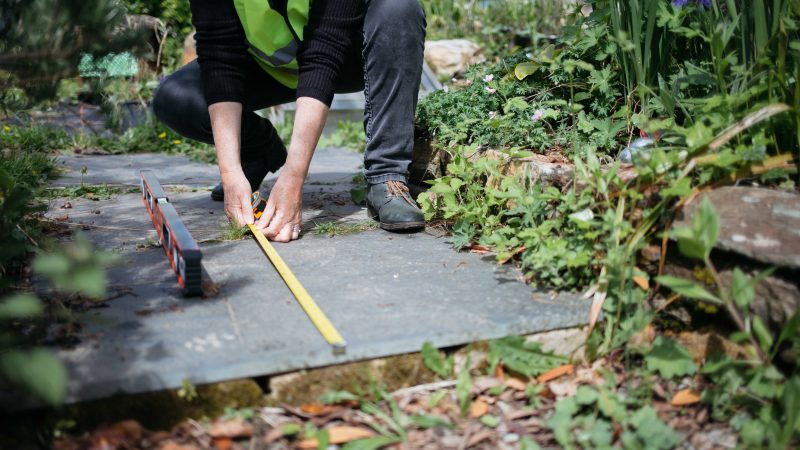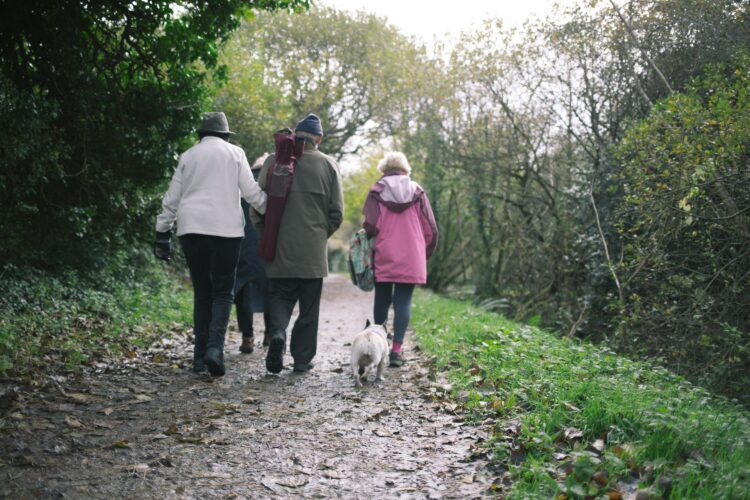The more accessible your paths, the more people will be able to enjoy your site, and the less you will need to overcome barriers to access.
Key access advice
Pay careful attention to widths. Narrow paths limit use by wheelchair users and people who need someone alongside.
Avoid loose materials, such as gravel and soft bark. These are challenging for people with limited mobility, and often impossible for wheelchair users.
Play it safe. Uneven and slippery surfaces, trip hazards and challenging gradients increase the risk of slips and trips, particularly for people with visual impairments and limited mobility.
Design guidance
These notes will help you design outdoor paths and routes that are accessible to people with limited mobility, wheelchair users and people with sensory impairments.
These are intended as an outline guide and not as detailed specifications. It is essential that any design conforms with current Building Regulations and relevant standards.
Path width
2.0m : room for 2 wheelchairs, or two people, side by side.
1.5m : room for 1 wheelchair plus pedestrian alongside.
1.0m : room for 1 wheelchair with no room alongside.
On busy routes, passing places are particularly important. Where appropriate these may also provide seating.
Paths alongside buildings should be designed to take account of windows that open outwards.
Gradients and slopes
1:20 - recommended maximum gradient.
Any gradient steeper than 1:20 is considered a ramp and should be designed accordingly (see ramps and steps).
Camber and drainage
1:100 - recommended maximum
Paths, steps and ramps should have a slight cross-fall to shed water.
However, cambers present difficulties for both wheelchair users and people with visual impairments. Therefore aim to minimize.
Maintenance
Regular maintenance is essential to ensure that ramps remain usable and safe. In particular the removal of debris and clearance of snow and ice in winter.
Lighting
Low lighting will increase the risk of slips and trips, especially for people with limited mobility. Paths that are intended to be used after dark should be lit.
Materials for paths and routes
Outdoor path surfaces should be firm, level, non-glare and non-slip when wet or dry. Loose materials, such as gravel, cobbles and uneven setts are not recommended. Hard surfaces must have a well-consolidated sub-base to avoid the surface cracking, moving or rutting.
Surfaces should be well constructed and should give firm, non-slip, level access. Loose materials, such as gravel and soft bark, are unsuitable and should not be used for main circulation routes.
There is a wide range of materials available, these are the main ones:
In-situ concrete:
Low cost, durable and low maintenance. Unattractive in its raw state but wide range of exposed finishes available. Surface should be textured to give extra grip. Non-slip finishes can be applied.
Asphalt and Tarmac:
Low cost and low maintenance. Good durability as long as preliminary consolidation and weed elimination are carried out. durable and easy to maintenance. Unattractive in its raw state but can be surfaced with other materials to give attractive finish. Should be laid between solid edges. 'Stickiness' in hot weather can be a problem.
Hoggin:
Low cost, depending on local source. Informal appearance. Provides good grip and level firm surface as long as it is well prepared and constructed. Has a tendency to rut easily, particularly under wet conditions and can be muddy. Not recommended for wet areas.
Self-binding gravel:
Low cost, depending on local source. Notes as per hoggin.
Brick paviors:
High cost. Attractive with range of colours and grades. Useful for introducing contrast into hard surfaces, or for edging. Products may vary in quality and performance. Avoid ones that are slippery, uneven or foot vulnerable. Good construction is essential - poorly laid bricks are a hazard.
Wood:
Medium - high cost. Attractive, natural appearance. Main limitation is short life and risk of becoming slippery. Can be coated with hot bitumen and sharp sand or netting to improve grip. Must be well laid, and at right angles to direction of travel so as not to trap wheelchair wheels.
Cobbles:
Expensive, difficult surface for most disabled people. Can be slippery. Can be useful for defining no-go areas. Can be set low to provide a smoother surface.
Epoxy-bonded resin aggregate:
High cost. Attractive with range of colours and grades. Can be a useful contrast material.

Projects
Sensory Trust projects apply our approaches on the ground and provide ideas and techniques to share.

Access audits and reviews
A Sensory Trust audit helps ensure your venue welcomes people of all ages and disabilities.

Training
Sensory Trust delivers training to help develop skills in accessibility and sensory design. We can tailor our training to best suit your needs.
Image Credit: National Trust




